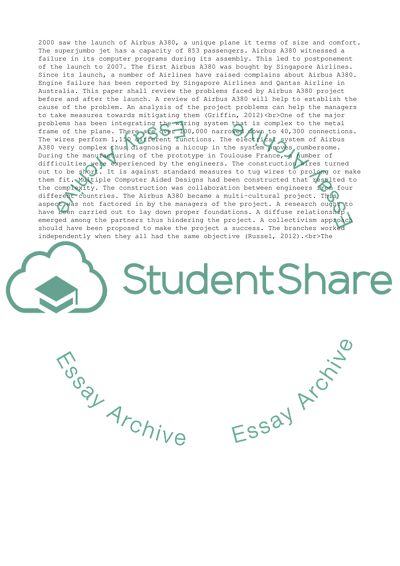Cite this document
(Apply relevant theory to analyse Why Projects Fail in airbus-A380 in Coursework, n.d.)
Apply relevant theory to analyse Why Projects Fail in airbus-A380 in Coursework. https://studentshare.org/management/1813363-apply-relevant-theory-to-analyse-why-projects-fail-in-airbus-a380-in-your-chosen-case-study-company-which-might-impact-the-organisation-policies-and-performance-including-commitment-at-work-critically-evaluate-the-impact-of-classic-mis
Apply relevant theory to analyse Why Projects Fail in airbus-A380 in Coursework. https://studentshare.org/management/1813363-apply-relevant-theory-to-analyse-why-projects-fail-in-airbus-a380-in-your-chosen-case-study-company-which-might-impact-the-organisation-policies-and-performance-including-commitment-at-work-critically-evaluate-the-impact-of-classic-mis
(Apply Relevant Theory to Analyse Why Projects Fail in Airbus-A380 in Coursework)
Apply Relevant Theory to Analyse Why Projects Fail in Airbus-A380 in Coursework. https://studentshare.org/management/1813363-apply-relevant-theory-to-analyse-why-projects-fail-in-airbus-a380-in-your-chosen-case-study-company-which-might-impact-the-organisation-policies-and-performance-including-commitment-at-work-critically-evaluate-the-impact-of-classic-mis.
Apply Relevant Theory to Analyse Why Projects Fail in Airbus-A380 in Coursework. https://studentshare.org/management/1813363-apply-relevant-theory-to-analyse-why-projects-fail-in-airbus-a380-in-your-chosen-case-study-company-which-might-impact-the-organisation-policies-and-performance-including-commitment-at-work-critically-evaluate-the-impact-of-classic-mis.
“Apply Relevant Theory to Analyse Why Projects Fail in Airbus-A380 in Coursework”. https://studentshare.org/management/1813363-apply-relevant-theory-to-analyse-why-projects-fail-in-airbus-a380-in-your-chosen-case-study-company-which-might-impact-the-organisation-policies-and-performance-including-commitment-at-work-critically-evaluate-the-impact-of-classic-mis.


